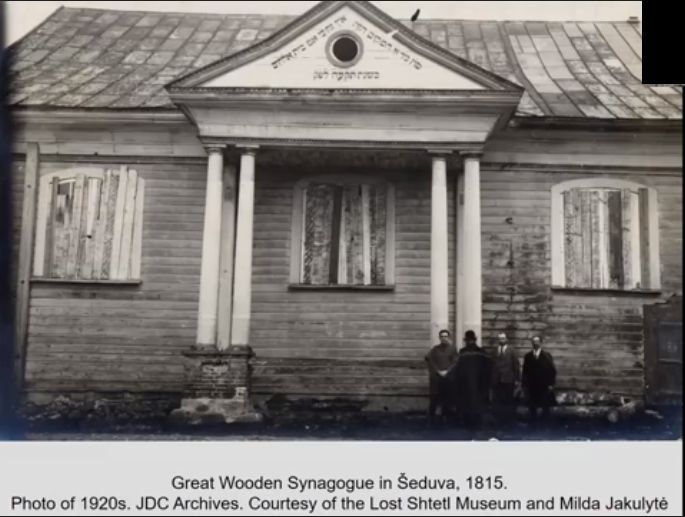
Great Wooden Synagogue, 1815. Photo of 1920th. *) The entrance is on the right.
*) Source: https://www.youtube.com/watch?v=krKHvkY82IE
A lecture on “The Land of Wooden
synagogues” by Vladimir Levin.
Center for Jewish Art, Hebrew
University of Jerusalem.
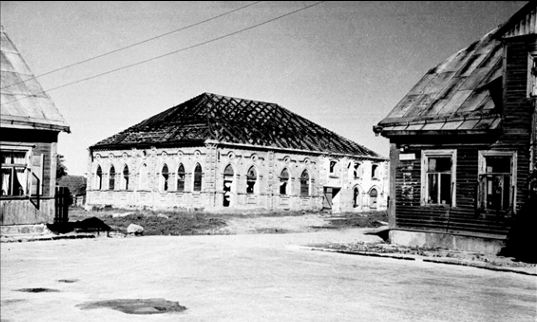
A second synagogue was built between 1900 and 1935
It was made of red brick stone
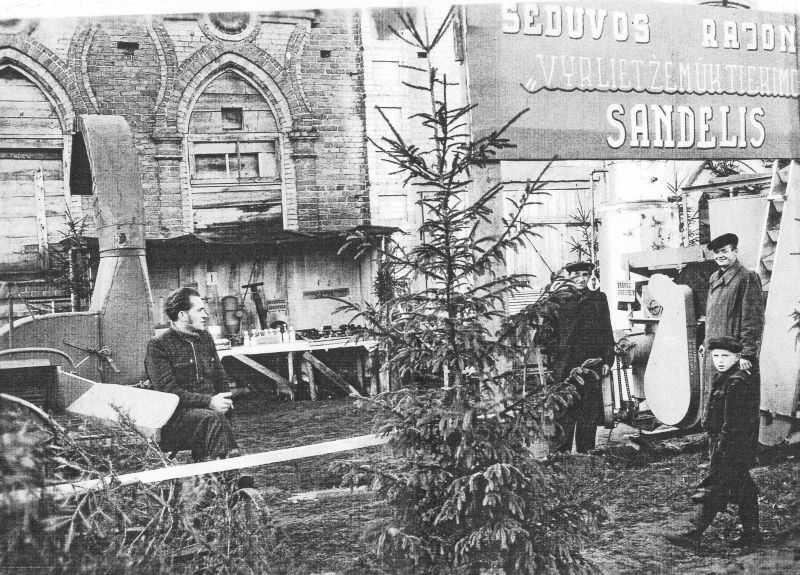
As you can see, the windows disappeared and they were locked with wooden boards. This photo was taken after the war, in the 1960’s, and people are looking at us. They probably are either sellers or buyers, because the red brick stone synagogue was built near the market place of Seduva, actually very near to the square where the wooden synagogue was.
But very soon after this photo was taken, the synagogue was destroyed and the gravel was used for paving foot paths through the park where used to be the square with the wooden synagogue on it.
 more
in detail
more
in detail
What is the meaning of a
synagogue?
Men stayed on the groundlevel. Women were separated from men by the upper level and by a fence. Such 'seperation' is made, because in this way one can pray to God in a very concentrated manner and one isn’t distracted by the opposite sex. In the centre of the synagogue one can find the bima, a table with a beautiful cloth, on which one lays the Torah-scrolls from which one reads a certain chapter during the service. The Torah (the five books of Moses) is written and read in the Hebrew language. The Torah-scrolls are kept in the Aron Hakkodesj situated on the east-side of the synagogue. Unfortunately, I don’t know, up to this point, neither what the inside of the synagogue looked like in detail, nor if the Torah-scrolls were covered with a silk or velvet cloth and ornamented with silver or gold towers. The exact number of ritual objects one used in the synagogue for all kinds of services are not known by me. All the information which could lead to an answer was destroyed in 1941.
We could find some answers in the book written by Nancy Schoenburg and Stuart Schoenburg, see our section history
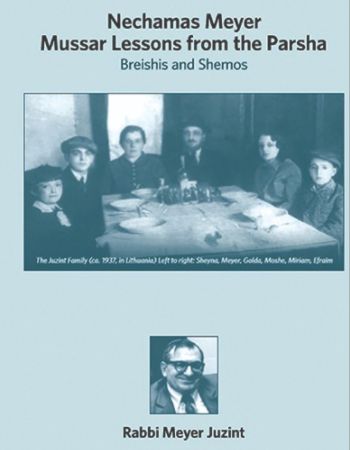
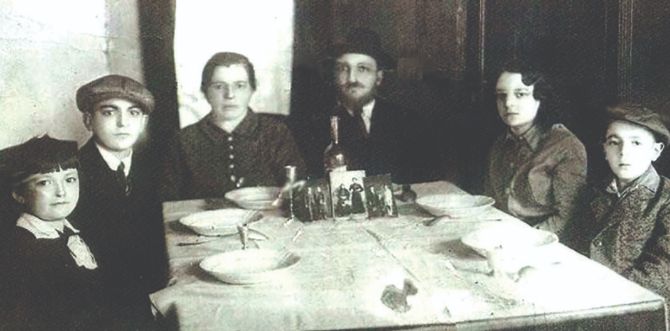
Meyer Juzint
-
on the photo with his family, second from left- was born on 15 June 1924
in Seduva. His parents were Moshe and Golda. His siblings were Efraim,
Miriam and Sheyna. Meyer was blessed with a photographic memory and had
an encyclopedic knowledge of the entire Torah.
In
1941, when the Germans entered Seduva, Meyer was elsewhere. Meyer
resided in Slobodka, because he studied there at the Slobodka Yeshiva.
Meyer Juzint was the only one of his family who survived the war. He
went to America, and settled in Skokie,Illinois.
Meyer Juzint became a great rabbi and scholar.
*)
By
courtesy of Beth Sarafraz.
March 2018.
Copyright
© 2018 Dora Boom